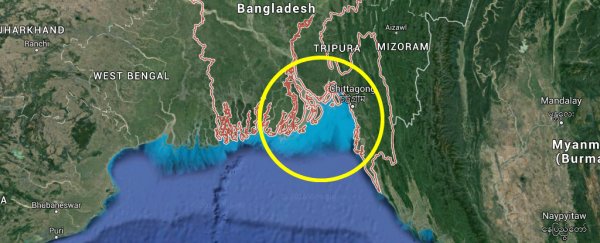California's San Andreas fault has been quiet for far too long and is overdue for a major earthquake, a leading geoscientist has announced. In a conference this week, the state was warned to prepare for a potential earthquake as strong as magnitude 8.0.
"The springs on the San Andreas system have been wound very, very tight. And the southern San Andreas fault, in particular, looks like it's locked, loaded and ready to go," said Thomas Jordan, director of the Southern California Earthquake Centre.
Jordan gave his warning in the keynote talk of the annual National Earthquake Conference in Long Beach, the Los Angeles Times reports.
Here's why he's so worried: research has shown that the Pacific plate is moving northwest relative to the North American plate at a rate of around 5 metres (16 feet) every 100 years - and that's building up a whole lot of tension along the San Andreas fault line that needs to be relieved regularly.
But the last time southern California experienced a major shake-up was in 1857, when a magnitude 7.9 quake rupture almost 300 km (185 miles) between Monterey County and the San Gabriel Mountains.
Further south, areas of the fault line have been quiet even longer, with San Bernardino county not moving substantially since 1812, and the region near the Salton Sea remaining still since the late 1600s.
All of this means that there's a lot of tension underneath California right now. Last year, Jordan's team found there's a 7 percent chance the state will experience a magnitude 8.0 quake in the next three decades.
And that's a big problem. Back in 2008, a US Geological Survey report found that a magnitude 7.8 earthquake on the southern San Andreas fault could cause more than 1,800 deaths, 50,000 injuries, US$200 billion in damage, and long-lasting infrastructure disruptions - such as six months of compromised sewer systems and ongoing wildfires.
Even though Los Angeles isn't on the San Andreas fault line, simulations by the Southern California Earthquake Centre show that the shaking would quickly spread there:
According to their modelling, that size earthquake could cause shaking for nearly 2 minutes, said Jordan, with the strongest activity in the Coachella Valley, Inland Empire and Antelope Valley.
The reason Los Angeles is at so much risk is because it's built over a sedimentary basin, and the seismic waves spread and get trapped there to cause more extreme and longer-lasting shaking. As you can see in the magnitude 8.0 simulation:
While Jordan praised recent initiatives to earthquake retrofit buildings in LA, he warned that the rest of the state needs to get ready for the next big one, by making residents more aware of ways to stay safe during an earthquake and when and how to evacuate.
"We are fortunate that seismic activity in California has been relatively low over the past century," Jordan explained last year. "But we know that tectonic forces are continually tightening the springs of the San Andreas fault system, making big quakes inevitable."
